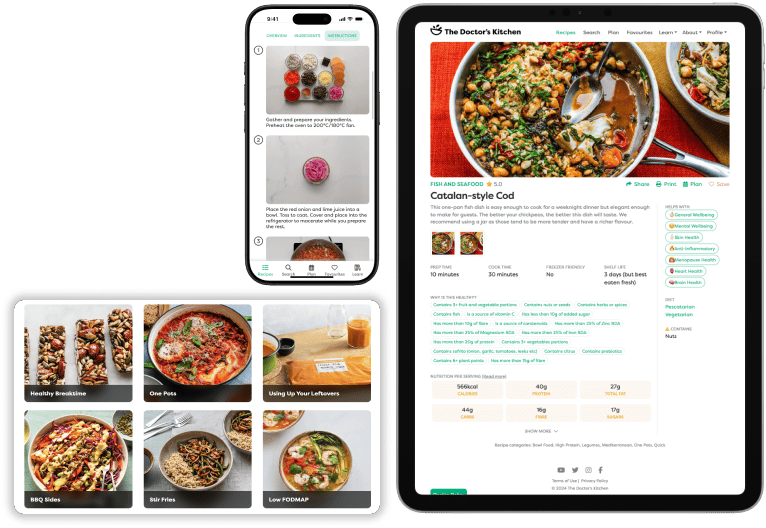Sweet corn: Unveiling its nutritional value
4th Aug 2023
Although corn has been cultivated as a staple food crop for thousands of years, it is often overlooked as a source of fibre and phytochemicals. Here's some inspiration to savour its goodness during the warm months!
Key points
In a Nutshell

Save it on Pinterest or download it for later.
Plant Tales
One of the three sisters of Agriculture: Corn (Zea mays) originated from a wild grass, called Balsas teosinte. It was first domesticated by native people in Southern Mexico about 10,000 years ago and planted with beans and squash, as part of the traditional three sisters planting system. In legend, the plants were a gift from the gods, always to be grown together, eaten together, and celebrated together.
Modern corn has evolved: It was introduced to Europe in the late 15th century by colonists such as Christopher Columbus and spread rapidly to many parts of the world. Over the years, farmers used selective breeding to increase yield, sweetness and ability to grow in different climates, generating the many corn varieties grown around the world today. (Oas et al. 2021)
Eat it quickly after picking? You might have been told to eat sweetcorn as fresh as possible. That’s because its sugars are quickly converted to starch after harvest, making the kernels tough and starchy.
Rainbow kernels: There are many different varieties of corn, including the traditional yellow or white, but also red, blue, pink, and black kernels, often banded, spotted, or striped.
Grow it yourself: Corn is relatively easy to grow and without a doubt tastes so much better! If you have access to a garden, you could even try companion planting with beans and squashes, providing both sustainable soil fertility and dietary diversity from a single planting!
Research Digest
There are some nutritional stigmas attached to corn because of its sugar content. But it contains similar amounts to other starchy vegetables. Most whole plants have a place on our plates as part of a diverse diet, especially if you enjoy it.Adding corn to a meal provides:
- Fibre with prebiotic effects.
- Carotenoids – mainly lutein and zeaxanthin which have pivotal biological functions.
- Phenolic compounds – mainly ferulic acid and anthocyanins, well known for their health-promoting properties.
In human studies, soluble fibre derived from corn was associated with:
- Gut health : Adding soluble corn fibre to people’s diets was linked to a beneficial shift in the gut microbiome in 3 small trials. It was also suggested to increase fibre intake in children without causing GI discomfort. (Risso et al. 2022)
- Glucose responses : Replacing 30-50% of carbohydrates with soluble corn fibre reduced participants’ glucose and insulin responses in 2 small trials.
- Bone health : Soluble corn fibre improved bone calcium retention in 2 studies on healthy postmenopausal women and adolescents.
What about whole corn? The research we found used soluble corn fibre, produced by breaking down corn starch into all non-digestible fibres and is often funded. We need more research to generalise these results and apply them to whole corn as part of our diet.
In daily life: Make corn one of your carbohydrate sources and combine it with a diversity of vegetables.
Tasty Tips
Around the world
- Mexico: Esquites, a popular street food made from toasted white corn kernels. It varies between different parts of Mexico – some add a fresh herb called epazote and serve it with cotija cheese, lime juice, mayonnaise or hot sauce.
- Brasil: Curau de milho, a creamy dessert made of corn, milk and sugar and often enjoyed during the Festas Juninas.
- Nigeria and Cameroon: Cornchaff/Adalu, a one-pot corn and beans dish.
- Ghana: Oblayo, a creamy breakfast porridge made from hominy corn kernels and enjoyed with a dust of cinnamon, evaporated milk and peanuts.
- India: Masala Bhutta, roasted corn on the cob with tamarind paste and spices like cumin, chaat masala and red chilli powder.
4 ways to enjoy sweetcorn this season
- Add to salads: Combine corn kernels with beans and veggies like chopped cucumbers, baby tomatoes, radicchio, lettuce, fresh coriander and a creamy dressing.
- Frittata or omelette: Sauté with onions, baby tomatoes, spices and any veggies you have. Add whisked eggs and toppings like spring onions, chilli, feta or pesto.
- Grilled: Rub corn on the cob with aromatics like chilli, cumin, cajun seasoning, lime juice, fresh herbs, parmesan, coriander, garlic, etc.
- Stews: Add to your bean or lentil stews with broth, spices and other veggies. Serve it up with lots of toppings.
- Fritters: Add to a batter with almond or oat flour, eggs, courgette, spring onions, fresh herbs and spices. Heat in a pan until golden.
Recipes to try
- Ital Style Vegetables with Spicy Almond Sauce
- Bean Salad with Spicy Avocado Cream Dressing
- Bean and Corn Tacos with Avocado Creama and Salsa
- Sweet Potato, Leek and Corn Chowder
Dive Deeper
History & compounds: Oas et al. 2021 – Duru et al. 2020 – Iowa State University – Shah et al. 2016
Gut health: Boler at al. 2011 – Costabile et al. 2016 – Seema et al. J Nutr. 2012 – Risso et al. 2022
Glycemic response: Konings et al. 2014 – Tan et al. 2020
Bone health: Steven et al. 2016 – Whisner et al. 2016
- Access over 800 research backed recipes
- Personalise food for your unique health needs
